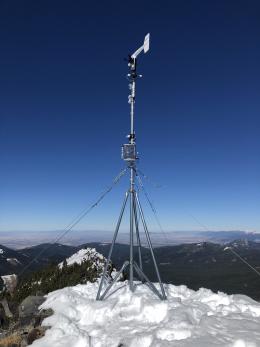Good Morning. This is Alex Marienthal with pre-season avalanche, weather, and event information for the Gallatin National Forest Avalanche Center on Friday, November 2nd. This information is sponsored by The Friends of the Avalanche Center and all those who attended, donated, and sponsored the 20th Annual Powder Blast last Friday.
Heavy rain in Bozeman last night fell as snow in the mountains. The Bridger Range got up to a foot of heavy snow (and some rain) while the rest of the mountains got 3-5”. Temperatures this morning are in the mid-30s F and wind is westerly at 15-25 mph with gusts of 35-45 mph. Temperatures will be in the 30s F today and cool to high 20s F this weekend. Wind today will be westerly at 25-35 mph with gusts of 50-60 mph. Snow showers tonight and tomorrow will drop 4-6” in the mountains, and heavier snow on Sunday could deliver upwards of 6-12”.
We will update our weather and avalanche log and regional pages daily.
The mountains got 10-20” of new snow since Wednesday. Combine that with strong wind today and avalanches are a real possibility this weekend. You will most likely find unstable snow in two types of terrain. The first is on wind-loaded slopes, where wind has drifted new snow into thicker, fresh slabs. These wind slabs are common near ridgelines or on convex (roll-shaped) terrain, such as the top of rollovers and along the edge of gullies. The second place to expect unstable snow is where new snow fell onto layers of old snow from early October. Whether the old snow is sugary and weak, or a firm, refrozen crust it will be a layer that new snow might not stick to on steep slopes. Layers of old snow are mostly confined to higher elevation and shady (northerly) aspects.
Steep slopes where wind slabs are freshly drifted onto old snow are the perfect place to trigger an avalanche, and therefore the slopes to avoid this weekend. Stick to lower angle terrain, or carefully assess the stability of the new snow-old snow interface before riding steep slopes. Steep slopes that are not wind-loaded and don’t have old snow might have thin cover. Resist the temptation to venture onto deeper and steeper, unstable slopes.
Avalanches have caught and injured skiers, hunters, and climbers during the early-season before. (Read this accident report from October 2012 in the northern Bridger Range, and this report from the tragic accident last October on Imp Peak.) Travel and prepare for avalanches as you would in the middle of winter:
- Equip yourself with all the tools: beacon, shovel and probe at a minimum.
- Travel one at a time in avalanche terrain.
- Small avalanches can be season-ending affairs at best and deadly at their worst. Be careful of getting swept into rocks or buried deeply in gullies or carried off cliffs. All of these have occurred early season in Montana.
- The snowpack is usually the most unstable during and immediately after new snow and wind. Cracking and collapsing of the snow is bulls-eye information that the snow is unstable.
- Plan to attend one of our avalanche education courses listed HERE.
We are preparing for winter, scheduling avalanche classes, and setting up weather stations. If you get outside send us an observation via our website, email (mtavalanche@gmail.com), phone (406-587-6984), or Instagram (#gnfacobs).
Upcoming Avalanche Education and Events
Our education calendar is full of awareness lectures and field courses. Check it out: Events and Education Calendar.
TONIGHT!!! Ullr and Skadi Fest, 7-9pm at 2405 W. Main. All proceeds go to Friends of GNFAC
November 6, 1-hr Avalanche Awareness, 6-7pm at Roskie Hall at MSU
November 7, 1-hr Avalanche Awareness, 6-7pm at REI Bozeman
November 8, 1-hr Avalanche Awareness, 6-7pm at Langford Hall at MSU
November 8, 1-hr Side-country Avalanche Awareness, 6-7pm at PHD Skis
November 14, 1-hr Avalanche Awareness, 6-7pm at Spire Climbing Center
November 26, MSU Snow and Avalanche Workshop, 5-9pm at MSU SUB Ballroom A
Novembeer 29, 30 and Dec 1, 2or 8, Intro to Avalanche w/ Field Day, more info here
Every Friday and Saturday in Cooke City starting November 23 and 24, Free Rescue training and Snowpack update, exact locations TBD
To prepare yourself for a safe winter in the backcountry you can read this accident report from October 2012 in the northern Bridger Range, and plan to attend one of our avalanche education courses listed HERE.


